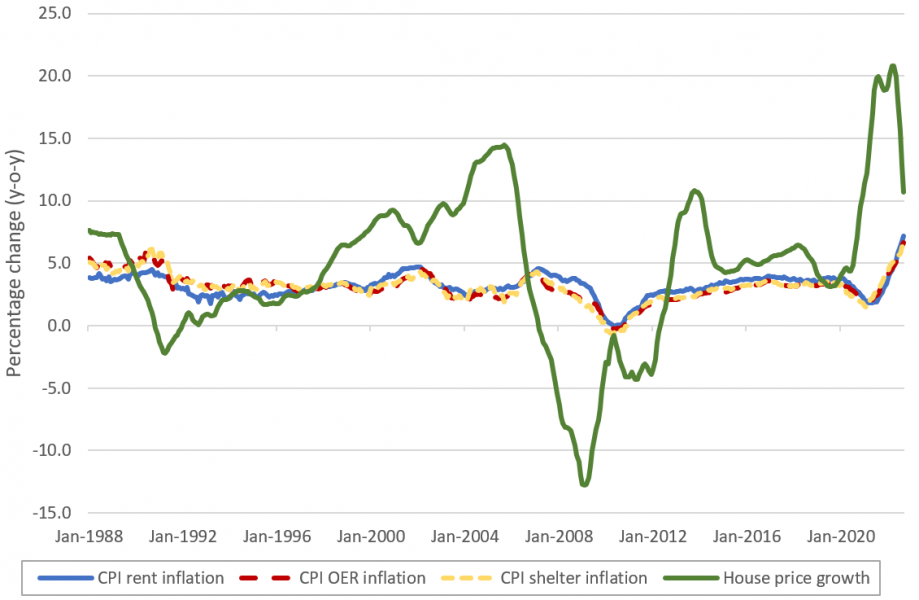


Himmelberg, C., Mayer, C., and Sinai, T. (2005). Assessing high house prices: Bubbles, fundamentals and misperceptions. Journal of Economic Perspectives, 19(4):67–92.
As per the US Census Bureau, the homeownership rate in the country stands at 66 per cent in the year 2020 and an average person moves residences more than eleven times in their lifetime.
Weights in overall CPI as of October 2022 (Source: Bureau of Labour Statistics).
With this framework, we are able to show that overweighting has consequences for optimal monetary policy. Extending the results of the previous work by Erceg and Levin (2006) and Barsky et al. (2007) would likely mean that an overweighted durable sector would be even more significant.